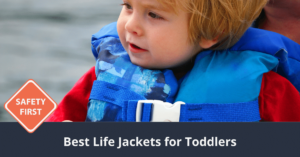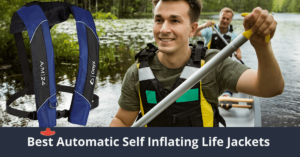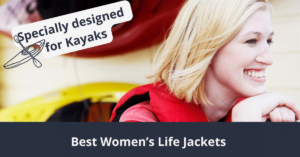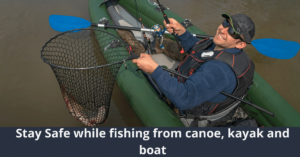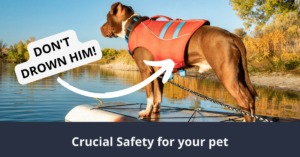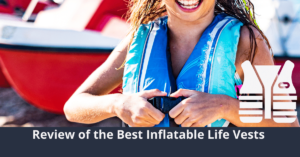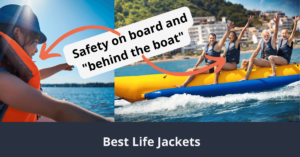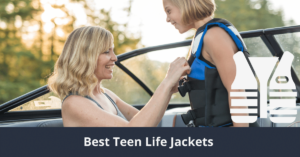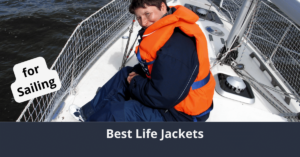Wakeboarding is a blast, but it can also be dangerous if you’re not wearing the proper safety gear. That’s why it’s always a good idea to don your life jacket or PFD(personal flotation device) before taking to the water.
Unfortunately, there are thousands of different vests, jackets, and devices on the market, and choosing the best one for wakeboarding can be challenging. That’s why we compiled a list of the best wakeboarding life jackets. This way, you can minimize the time you spend browsing and maximize your fun and safety.
Peruse our wakeboarding life vest reviews to discover more about PFDs. Our guides can help you choose among the different types and classes of life jackets so that you can find the ideal model. We’ll also offer some sizing tips and tricks to ensure that you always feel comfortable in your life vest. And, you’ll never have to worry about a stinky life vest again after reading our maintenance advice.
(You can also read our article specially on Best Extreme Water Sports Life Jackets)
[Product table]
Everything you will learn here
The Best Wakeboard Life Jackets Reviews (Top Picks)
Whether you’re an amateur wakeboarder or a seasoned pro, these life jackets are sure to make your sporting experience safer and more enjoyable. Take a look at what we had to say.
1. O’Neill Reactor USCG Life Vest
- USCG Approved Personal Flotation Device; Perfect for Wake Sports, Waterskiing, Tubing, and Swimming
- Segmented Foam Core And Anatomical Flex Points Allow Unrestricted Movement
- Quick Release Safety Buckles And Heavy Duty Front Zipper Create an Unparalleled Sense of Security
When it comes to safety standards, it’s difficult to beat the United States Coast Guard (USCG). Only the highest-quality, most exceptional life vests are awarded approval by the USCG, and the O’Neill Reactor vest is one of them.
Based on appearances alone, you can already tell that this PFD means business. Sleek, snug, and form-fitting, this life jacket also happens to be uniquely flattering in all-black. In addition to its rugged front zipper, this device also features two adjustable front buckles to help ensure users enjoy the firmest fit possible.
Both the zipper and buckles can be hidden and protected by the upper expansion panels, which also increase arm and torso mobility. This ‘flat-front’ design increases airflow, minimizing drag on the body during flips or stunts. And thanks to the open-arm design, there’s never any inner-arm chafing.
However, it does weigh 2.5lbs, making it the heftiest option on this list. This life vest also happens to be slightly more expensive than the average model. Still, the O’Neill Reactor is one of the safest and best-designed options available.
And because they offer six different sizes, you’re bound to find one that fits you perfectly.
Pros
- USCG-approved.
- Multiple adjustable buckles.
- Aerodynamic design and features.
- Available in multiple sizes.
- It doesn’t restrict movement.
Cons
- Heavier than the average life vest.
- Slightly more expensive than comparable models.
- May absorb excess water, making cleaning difficult.
2. Connelly Team Comp Life Vest
- Thin profile, 4-way stretch Neoprene, front zip vest
- No straps or buckles to get in the way
- X'' shaped rear panels for increased mobility
If you find that buckles and straps constantly get in the way of an enjoyable wakeboarding experience, the Connelly Team Comp vest might be the right one for you. Made of flexible neoprene, this life jacket is secured with a heavy-duty zipper and nothing else.
This vest comes in three sizes and fits chests between 32 inches and 48 inches. It’s important to order the right size because neoprene expands when it comes into contact with water. A snug fit means you’re wearing it correctly, and that your PFD won’t slip off while in use.
While the average life jacket weighs about 1.5lbs, the Connelly Team Comp vest only weighs one pound, making it one of the most lightweight options on the market. Still, this low weight does come with a significant downside.
While it’s nice to have buckles and straps out of sight and safely tucked away, a complete lack of them can be dangerous. If you hit the water too hard, and at a sharp angle, there’s a chance that the life jacket will pull away from your body. However, this situation can be avoided by purchasing the right-sized jacket.
Pros
- No dangling buckles or straps.
- It allows for exceptional freedom of movement.
- Reflective rear panels are easy to spot.
- Inner foam padding doesn’t retain lots of water.
Cons
- Not as secure as models with buckles or straps.
- Only available in four sizes.
- Not USCG-approved.
3. Palm Meander PFD For Women
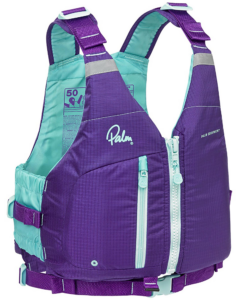
When we updated the article, we noticed, that this product is currently not available.
Life jackets for women tend to be less restrictive, but just as durable. The Palm Meander PFD is a great example of a secure, rugged, and freeing wakeboarding jacket. The design is thoughtful and unique, and the series of adjustable straps ensures that users of all body types will feel comfortable while wearing it.
This PFD is available in three sizes and fits chests 32 inches to 48 inches. It features three adjustable areas to ensure stability and security. There’s one on each hip and a belt-like hoop that secures around the waist. The hip bands never agitate the user’s skin, thanks to two smart, flexible fabric straps beneath them.
This is vastly different from the standard front-buckling system, which squeezes the vest against the user’s sides. The front zipper on this model does leave a lot to be desired, and it may slide a little during a high-impact moment. Still, the adjustable straps are sure to remain in place.
A neat additional feature of the Palm Meander is its surprisingly roomy front pocket. However, this pocket is by no means watertight or waterproof!
Pros
- Low-cut design allows for plenty of movement.
- It features several bodywide security straps for improved stability.
- The excellent adjustability and elasticity results in a more comfortable jacket.
- It allows for tons of airflow.
Cons
- Users may feel a greater force of impact due to minimal coverage.
- The front pocket is essentially useless.
- Shoulder straps may chafe bare skin over time.
4. O’Neill Slasher Comp Life Vest
- Not Approved By the U.S. Coast Guard, Vest Is For Competition Waterskiing and Wakeboarding
- NytroLite Foam: 3x Lighter, 10% More Buoyant, and Absorbs 15-20% Less Water Than Regular PVC Foam
- Segmented Foam Core And Anatomical Flex Points Enable Unrestricted Movement
The O’Neill Slasher Comp vest may be the most expensive option on this list, but it’s also the most fashionable. It also does an exceptional job of protecting the heart, ribs, and abdomen from sudden impacts (with water, of course).
This device comes in six sizes that fit chests 32 inches to 56 inches, making it one of the most compatible life vests. The internal foam components are arranged in a grid-like position, and they flex and conform to the user’s body and movements. So, while this life vest is snug and relatively tight-fitting, it’s also incredibly comfortable.
However, those hoping for an adjustable option that gives them a little leeway in terms of sizing may want to seek an alternative to this model. Despite all of its quality and class, it features absolutely zero adjustability. In addition, the only thing securing the O’Neill slasher to a user’s chest is the long front zipper.
To be fair, this zipper is heavy duty and likely to hold up to hard falls, gravity-defying twists, and anything else you can throw at it.
Pros
- Snug fit ensures that it won’t fly off during use.
- Sleek design and high-quality neoprene/foam build.
- It features a wide range of compatibility for different body sizes.
- Despite its dark coloration, this vest is surprisingly reflective.
Cons
- May be financially out-of-reach.
- It does not adjust in any way.
- The front zipper is the only thing securing this vest.
5. O’Brien Women’s Impulse Neo Life Vest
- ENHANCED COMFORT AND SAFETY: The O'Brien Women's Impulse Life Jacket is meticulously designed to provide optimal comfort and safety for women, ensuring you can enjoy your water adventures worry-free.
- PREMIUM QUALITY: Crafted from top-quality neoprene, rugged nylon and lightweight foam, this life jacket is built to last, making it an investment in your safety and enjoyment on the water.
- TAILORED FOR WOMEN: Experience a perfect fit with its women-specific design, ensuring a snug and comfortable feel that complements your style and body shape.
While the Palm Meander PFD features a plunging neckline, the O’Brien Women’s Impulse Neo Life Vest features far more chest-coverage and protection. Most notably, it achieves this without sacrificing and freedom of movement on the user’s part.
This model comes in six sizes and fits chests sized 28 inches to 48 inches, which is a fairly wide range. Comparable women’s life vests typically don’t cater to chest sizes smaller than 32 inches, so this life vest may be appropriate for some youths in addition to adults.
The O’Brien Women’s Impulse Neo is a fantastic option for wakeboarders of any gender, as it features a few unique design boons. For example, this vest secures via two strong, adjustable front buckles and a front zipper. To keep boarders attached to the boat or board, there’s also a handy daisy chain that’s sewn into the body of the vest.
However, prospective buyers should be aware that these vests tend to run small, so it may be wise to order a size up from your standard size. After all, the vest is incredibly adjustable, so you can secure it to your body fairly easily.
Still, if this model has one glaring flaw, it’s that the inner foam components aren’t fully stationary within the fabric, occasionally resulting in uncomfortable bunching.
Pros
- A quality option for petite women, youths, and some children.
- Very secure and incredibly adjustable.
- It has multiple attachment points for increased safety.
- Durable, and very buoyant.
Cons
- Foam can bunch-up and make swimming or wakeboarding uncomfortable.
- Buyers can easily order a vest that is too small.
- Not very reflective.
6. O’Neill Child Reactor USCG Life Vest
- The O'Neill Child Reactor Life Vest is the perfect life vest for days out on the boat and on the beach.
- The life vest is US Coast Guard approved and is designed to fit little ones between 30 and 50 lbs.
- To ensure security, this vest also has an adjustable leg strap for a snug and safe fit.
Just because you’re young doesn’t mean you’re not ready to wakeboard. And O’Neill makes on the best and sturdiest life vests for tiny wakeboarders. The O’Neill Child Reactor is USCG-approved and incredibly safe. Despite all of its safety features, it’s also one of the most flexible child’s vests available.
Unlike most children’s life vests, this model features segmented foam on the inside. This foam flexes with the child, preventing awkward or stiff arm movements. This is one of the many reasons why it’s a perfectly appropriate option for young wakeboarders. Another fantastic reason is its visibility.
While this vest does consist of a mix of colors, they are all incredibly reflective. This allows the user to remain visible at all times, which is helpful during emergencies. And while this vest is a tad bit heavier than comparable children’s PFDs, it’s also far sturdier.
This sturdiness comes at a slightly higher price, which is why the O’Neill Child Reactor life jacket is best-suited for adolescents and pre-teens, not toddlers or infants.
Pros
- Professional-quality life vest for little ones.
- Two large, adjustable front buckles for added fit and security.
- USCG-approved.
- Segmented foam for a greater range of movement.
- Highly-visible fabric for easier rescue.
Cons
- More expensive than comparable children’s life vests.
- Not appropriate for toddlers.
- Slightly heavier than comparable models.
(You might be interested in reading the Best Life Jackets for Toddlers)
7. Stearns Watersport Classic Series Life Vest
- US Coast Guard-approved adult life jacket
- Great for wakeboarding, water skiing, and tubing
- Soft and durable 200D nylon shell and lightweight PE flotation foam
The bright-blue reflective life vest is deceptively simple and exceptionally adjustable. It also allows for a nearly unrestricted range of motion, allowing wakeboarders to attempt tricks and jumps with ease. Thanks to a complete lack of siding, arms can move up, down, and all around.
The back panel and front panel secure around the wearer via three straps that wrap around the body of the vest. There is an additional upper-torso buckle for added adjustability, though it admittedly does very little.
Still, the Stearns Watersport Classic Series is mind-blowingly affordable, especially when compared to other USCG-approved models. The greatest drawback of this life vest is its one-size-fits-all availability. Unfortunately, petite or large users may be unable to use the Stearns life jacket.
Jackets that are overly large can slip up and over the head of the wearer, resulting in breathing difficulties. In the worst-case scenario, these oversized PFDs can escape the body entirely. However, if you are one of the lucky individuals who fit perfectly in this jacket, you’re bound to enjoy some savings and security.
Pros
- The most affordable option.
- Four security buckles across the torso.
- USCG-approved.
- Fully open sides for maximum breathability and fit.
Cons
- Lack of side protection.
- One-size-fits-all doesn’t mean that everyone will fit into this jacket.
- Design can result in jacket lifting above the head and becoming a hazard.
Wakeboarding Life Jacket Buyers Guide (Making the Best Purchase)
The best way to find the ideal wakeboarding life jacket is to learn more about PFDs. This way, you’ll know what features to look for and be better able to make some tough but informed shopping decisions.
Types of Life Jackets
Because every body of water is unique, so is every life jacket. Some are fantastically buoyant and are designed to keep users upright and breathing. Others are meant to help unconscious users from facing downwards in the water after an accident. Without further ado, let’s explore the five types of life jackets.
Type I
The bright-red, bulky life jackets that you may have seen during emergency demonstrations are often a Type I flotation device. It contains an abundance of floatable foam, secures mostly around the neck, shoulders, and mid-torso, and is often found on large vessels like cruise ships.
While Type I life jackets are the best option for deep or rough waters, they’re not very comfortable. And, because they’re so bulky, they can make it nearly impossible to swim or paddle to safety. That’s why these devices are often referred to as ‘rescue vests.’ However, their official term is ‘offshore life jacket.’
Type II
Type II life jackets are incredibly slim and lightweight. They may be completely flat until they may contact with water, or they may be manually-inflated jackets that require a strong set of lungs.
Either way, this type of jacket is meant for light water activities that occur close to shore. Their main purpose is to provide temporary bodily support and prevent drowning in the event of an accident.
Type III
Flotation aids are very similar to Type II PFDs, except that they tend to provide a little more support. While these devices should only be used on calm waters, they can prop an adult upwards in a large body of water, increasing their chances of survival and preventing them from breathing-in large amounts of water.
Type IV
If you’ve ever seen a candy-striped flotation ring, then you’ve seen a Type IV PFD. These white and red rings are often thrown toward a drowning individual and are used to help pull that individual to safety while keeping their torso above water.
These types of devices are common on large boats or ships, and they are designed to float away from an accident or wreck, ensuring the survival or the remaining crew and passengers.
Type V
Most specialized, automatically-inflating jackets belong to this group. Self-inflating fishing life vests are a fantastic example. While these PFDs wouldn’t be able to support a person for as long as a Type I, they’re far more practical for those enjoying light activities over shallow or medium depths.
Classes of PFDs
Did you know that in addition to types, there are also life jacket classifications? Chances are, you’re familiar with at least one of these classes.
Inherently Buoyant
These devices don’t require added air to keep users afloat. They are, by design, inherently buoyant. Cork, for example, naturally floats across the water. It is an inherently buoyant material. Marble or stone, on the other hand, is not.
Life jackets that primarily consist of lightweight foams are considered inherently buoyant. However, on the other side of the PFD coin are inflatable jackets.
Inflatable
Inflatable jackets or vests are worn while flat, and when they need to provide support, an internal canister fills the interior with gas, causing it to inflate. The wearer can activate this effect by manually pulling a cord, though some higher-end inflatable devices can detect impacts or water and self-inflate when triggered.
(If you need to purchase an automatically inflatable vest, we recommend to read: Best Self Inflating Life Jackets)
Hybrid
When you have foam materials and inflatable chambers, you have a hybrid life jacket. These are typically the heaviest, but also the safest. In the event of an emergency, they can keep you afloat long enough to gain consciousness, and after deploying the gas inflation, you may be able to swim to safety or stay afloat long enough for rescue workers to arrive.
Life Vest Materials
Have you ever wondered what’s inside of a life vest? What about the outside? The natural answer to at least one of these questions is fabric, but that’s a fairly general response. To truly understand PFDs and how they work, you must analyze what they’re composed of. Let’s begin.
Nylon
Nylon is often used to make tents, foldable chairs, and other water-resistant products. And while it is an affordable, lightweight option, it can cause skin irritation. If you have sensitive skin, or if you plan on wearing your life jacket for more than an hour at a time, it may be better to invest in neoprene.
Neoprene
Neoprene is a type of synthetic rubber. It is thin and flexible enough to be made into clothing and protective gear, but it’s also firm enough to retain its original shape, even after hours of stretching.
Most modern wetsuits are made of neoprene, and this material naturally lends itself to wakeboarders. It can help keep athletes warm, safe, and comfortable during any boarding session. It is important to note, however, that neoprene absorbs a small amount of water, allowing it to expand slightly. So, if your neoprene jacket feels a little too tight, you may just want to take a quick dip and let the water work its magic. Neoprene has a soft, almost skin-like feel and is unlikely to cause chafing.
Foam
Nearly every PFD contains foam of some kind. However, it’s nearly impossible to find a pure foam life jacket. Even throwable life preservers feature a plastic coating for preservation. Foam, on its own, is just too easily degraded by UV radiation, wind, and salty water.
That’s why most life jackets feature lightweight foam interiors and rugged, synthetic outer layers. Otherwise, they’d fall apart incredibly easily. The most commonly used foams include polyethylene, which is a plastic-based foam.
Polyester
Polyester is occasionally found in PFDs. It’s added to neoprene life jackets to form strong, stable connections between fabric panels. It’s a popular choice because it is resistant to most types of damage and dries in seconds.
Vinyl
Vinyl vests are increasingly more popular, and that’s partially thanks to the soft, skin-friendly feel of vinyl life jackets. While this material is remarkably inflexible, it’s also naturally buoyant and unlikely to chafe. For these reasons, it’s likely that manufacturers will continue to incorporate vinyl into their life jackets and PFDs.
Features to Look for in a Life Vest
There are a few key aspects to keep an eye out for while browsing for a new wakeboarding life vest. Let’s explore some of the most influential and important features to consider.
Size
Sizing is incredibly important, as a vest that’s too large won’t be able to do its job. In contrast, a vest that is too tight may restrict breathing and actually reduce a person’s ability to swim. Always measure your chest size before browsing for life vests.
Doing so will ensure that you eliminate wrongly-sized options from the get-go, saving you precious time and energy.
Safety
When you’re talking about life jackets, safety could mean one of two things. I could mean buoyancy, or the jacket’s ability to keep wearers afloat and safe from drowning. But, it could also mean security, as in how securely the vest fits the wearer, preventing accidental loss of the PFD.
Typically, higher-buoyancy life vests restrict arm, shoulder, and neck motion. So, wakeboarders may want to invest more heavily in the security aspect of PFD safety. For example, life jackets with many adjustable straps, belts, or buckles can help the device conform to the wearer’s body more firmly.
A single zipper is only an effective closer if the vest is similar to a bodysuit. Form-fitting life jackets can function perfectly well with only a front zipper for security. Yet, when you’re browsing with safety in mind, it’s always important to choose the snuggest jacket with the most straps.
Drowning is a serious issue. If you’d like more information on U.S. Drowning Statistics, Worldwide Drowning Statistics, and Drowning Prevention, don’t hesitate to visit our site. Remember, it’s always better to be safe than sorry.
Comfort
Because you’ll likely be donning your life jacket for several hours at a time, you’ll want to make sure it’s comfortable. If you tend to do most of your sporting shirtless or in light, airy clothing, you’ll definitely want to choose a skin-friendly material.
Fortunately, most PFDs are made of synthetic fibers, and there’s a very low incidence of an allergic reaction to synthetic fibers and fabrics. Unfortunately, these resilient materials can chafe and cause irritation, especially if they persistently rub against the skin.
The best way to avoid life vest discomfort is to invest in one with plenty of room around the arms and shoulders. Alternatively, you could wear a water-safe t-shirt before taking to the water.
Durability
If you’re going to invest between $50 and $200 on a wakeboarding life jacket, you’re probably going to want to choose one that will last at least several months. The life of a PFD varies and is influenced by three vital factors:
- Initial quality
- Usage
- Care
The initial quality of a product, before a consumer has opened it, touched it, or used it, is a great place to start when attempted to judge how long an item should last. Inferior-quality products will almost always last a shorter amount of time than superior-quality products, and investing a little time in researching a product’s materials can help illuminate its quality.
How often you use or intend to use your life jacket also helps determine how durable it really is. After all, you could own a rugged, sleek wakeboarding jacket that comes apart at the seams in three months, and that same jacket might last a year or more for someone else. The more frequently you use your PFD, the sooner you’ll need to replace it.
This is especially true of wakeboarders who prefer rougher waters. However, taking proper care of your vest is a great way to extend its life. Mild soap and clean water can work wonders for any life jacket or PFD.
Freedom of Movement
Bulky PFDs, like Type I life jackets, can be cumbersome and limit movement. If you fall off of your board and you’re wearing one of these types of jackets, you might not be able to swim to shore without assistance.
That’s why it’s important to choose a wakeboarding life jacket that allows for plenty of movement. Not only will it improve your grasp on the line, but it will also allow you to swim freely when approaching the boat or shoreline.
It’s also important to note that PFDs that restrict movement also tend to cause underarm chafing and discomfort. In general, the more armpit room a flotation device has, the more mobility it allows.
Reflectivity
Neon-bright life vests aren’t always regarded as the most attractive. However, bright reflective colors help responders and rescuers locate you in the event of an accident or emergency. If you’re planning on wakeboarding in the ocean, or in a remote location, it’s important that you’re as visible as possible.
Price
The final feature to consider, and perhaps the most limiting factor, is the price. If you find a fantastic life jacket that is over budget, you have two options. Firstly, you could decide to go ahead with the purchase anyway, understanding that you will need to trim costs in another area.
Secondly, you could decide to choose a more wallet-friendly model. When choosing a budget option, you may have to sacrifice one or more of your desired features. This isn’t nearly as difficult to achieve as you’d think, as your priorities will help determine the best choice.
For example, if you value jacket adjustability and a firm fit over any other aspects, you can focus on finding a budget model that exemplifies those qualities. While additional features and functions might be nice, when it comes to staying within a budget, it may be better to go for the essentials.
Sizing Tips and Tricks
Life jacket sizes typically fall into one of four categories. These categories are:
- Infant
- Child
- Youth
- Adult
While shopping, you’ll likely find a slew of sizing guides that list chest sizes. However, this is only helpful if you already know what your size is. To do this, take a flexible tape measurer (like the ones used for sewing) and wrap it around the widest part of your chest.
Allow the tip of one end of the tape to meet the remainder, and look to the inch indication. Hold the tape firmly, but make sure not to squeeze. Otherwise, you may end up with a life vest that is constrictive.
Life Jacket Maintenance and Care
When you’re done wakeboarding for the day, it’s time to perform a little life jacket maintenance. While taking your jacket off, always check for rips or tears. If you spot any, it’s time to invest in a new PFD.
However, if you find that your vest is still in great condition, use a mild soap (dish soap works very well) and lukewarm water to wash the vest. Don’t squeeze any water from the vest, as this may distort the foam within.
Instead, simply leave your life jacket out in a warm area, but be sure to keep it out of direct sunlight. Too much heat can warp or damage a life vest. That’s why you may want to take this time to cover your PFD with a UV protectant.
Best Wakeboarding Life Jacket Comparison Chart
| Product Name | Price | Size | Safety | Unique Features |
|---|---|---|---|---|
| O•Neill Reactor USCG Life Vest | $-$$ | M, L, XL, XXXL | USCG approved, it doesn•t restrict movement | Aerodynamic design and features |
| Connelly Team Comp Life Vest | $ | S, XL | Secured with a heavy-duty zipper | Allows exceptional freedom of movement |
| Palm Meander PFD For Women | $ | XS, S, M, L, XL, XXL | Several bodywide security straps for improved stability | Low-cut design allows for plenty of movement |
| O•Neill Slasher Comp Life Vest | $-$$ | M, L, XL, XXL, LT | Snug fit ensures that it won•t fly off during use | Sleek design and high-quality neoprenebuild |
| O•Brien Women•s Impulse Neo Life Vest | $-$$ | XS, S, M, L, XL | Multiple attachment points for increased safety | Quality option for petite women, youth, and some children |
| O•Neill Child Reactor USCG Life Vest | $ | S | USCG approved, adjustable front buckles for added fit and security | Highly-visible fabric for easier rescue |
| Stearns Watersport Classic Series Life Vest | $ | OVR | USCG approved, security buckles across the torso | Fully open sides for maximum breathability and fit |
Wrap Up
There are lots of different types and classes of life jackets, and even more features and materials from which to choose. The best flotation device for your wakeboarding experience depends on your size, your budget, and your priorities.
Still, perhaps you now have a clearer idea of which features to look for, and which to ignore, and that can make all the difference.
Last update on 2025-04-30 / Affiliate links / Images from Amazon Product Advertising API

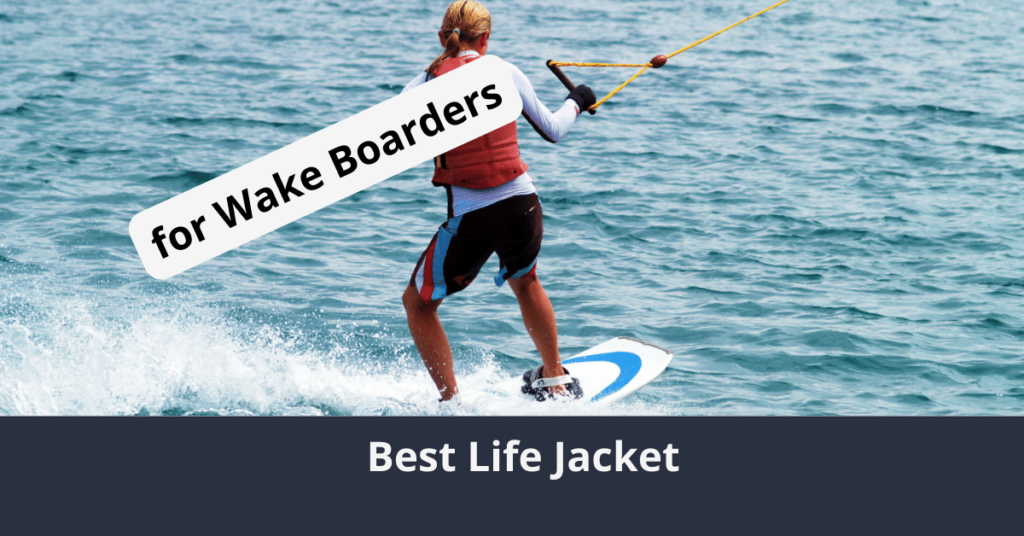






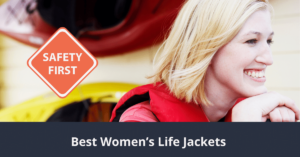
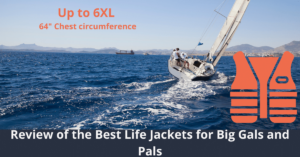
![7 Best Jet Ski Life Jackets with awesome fit [2023 guide] 12 Best Jet Ski Life Jacket](https://insmoothwaters.com/wp-content/uploads/2022/09/Best-Jet-Ski-Life-Jacket-300x157.png)
